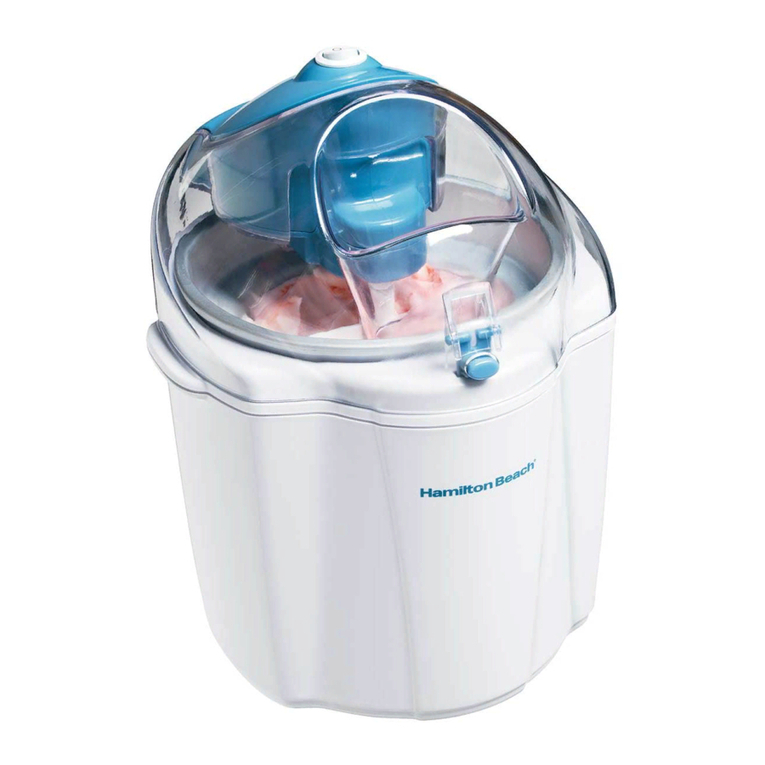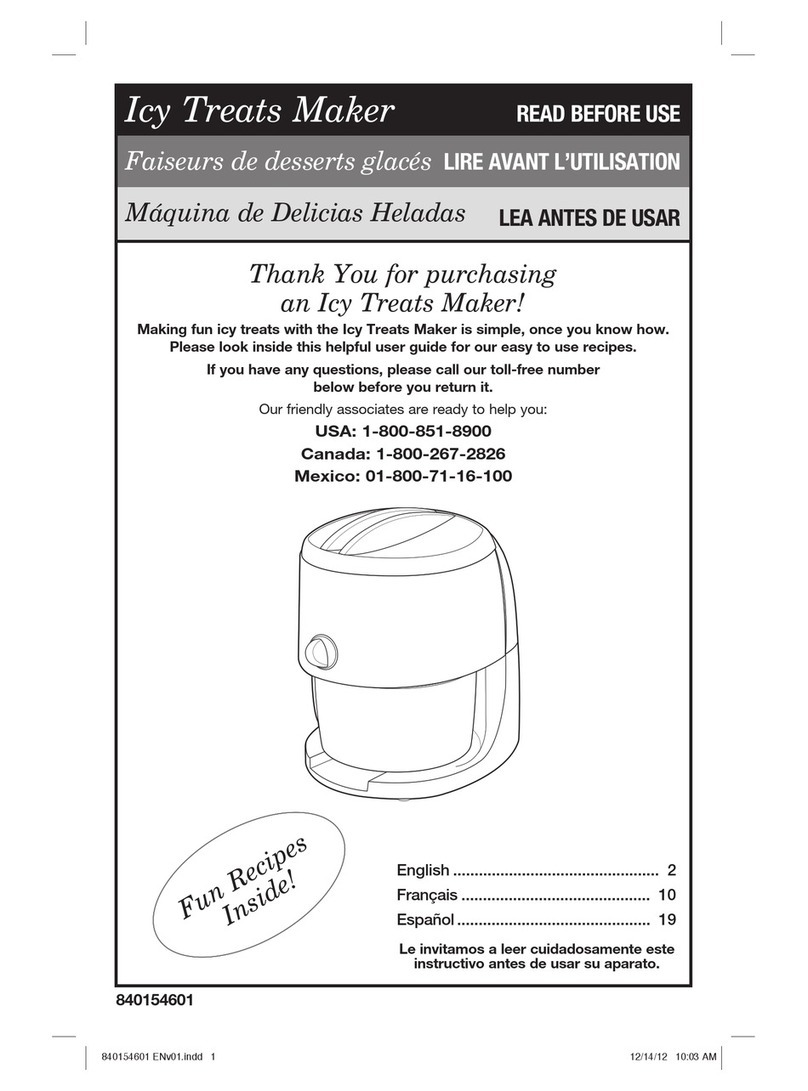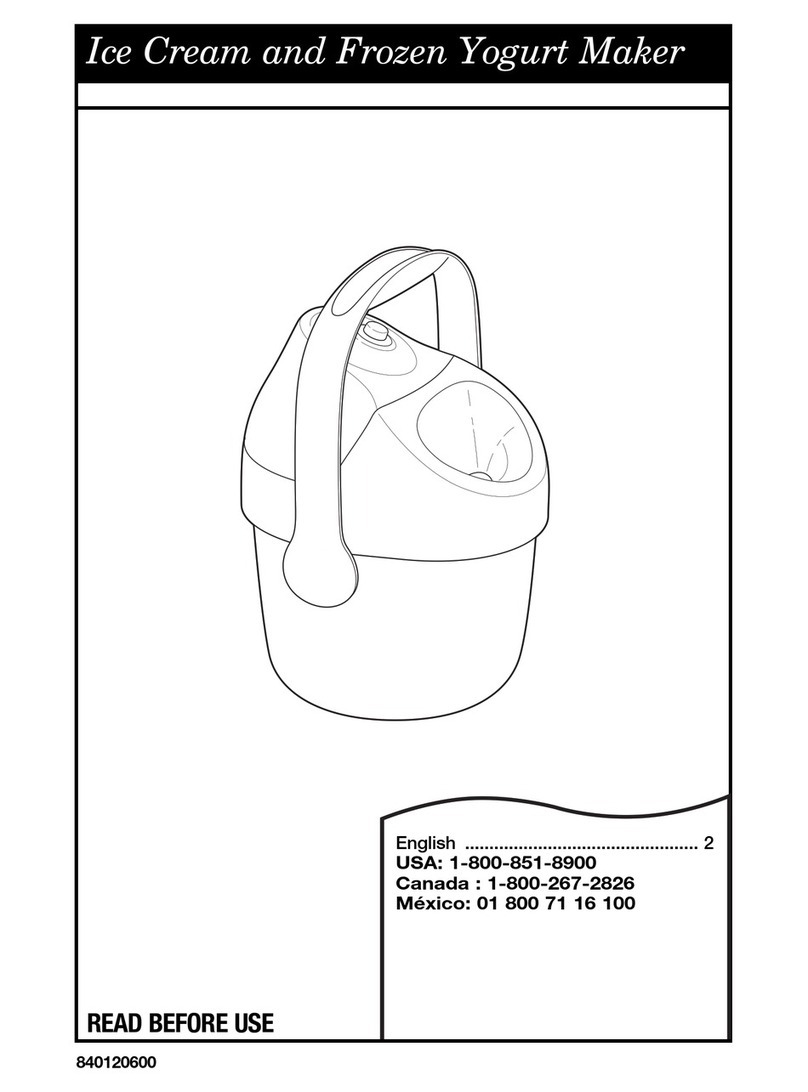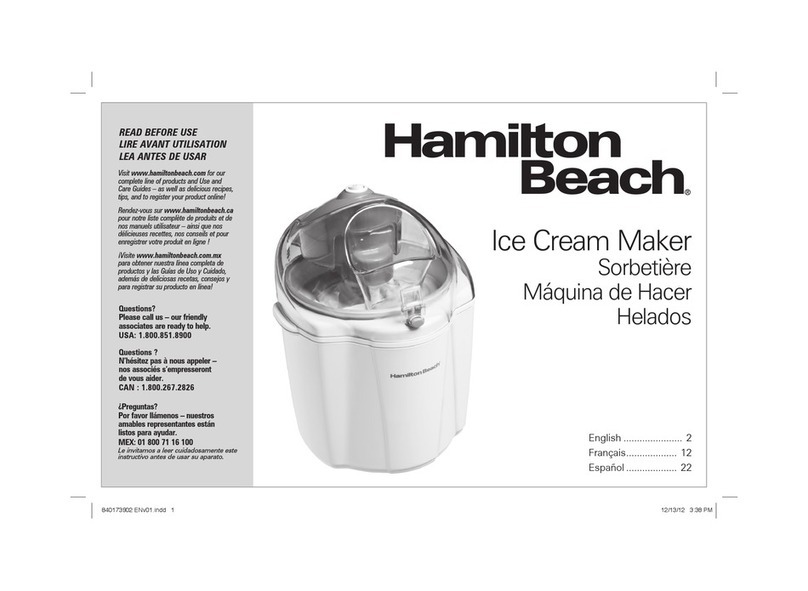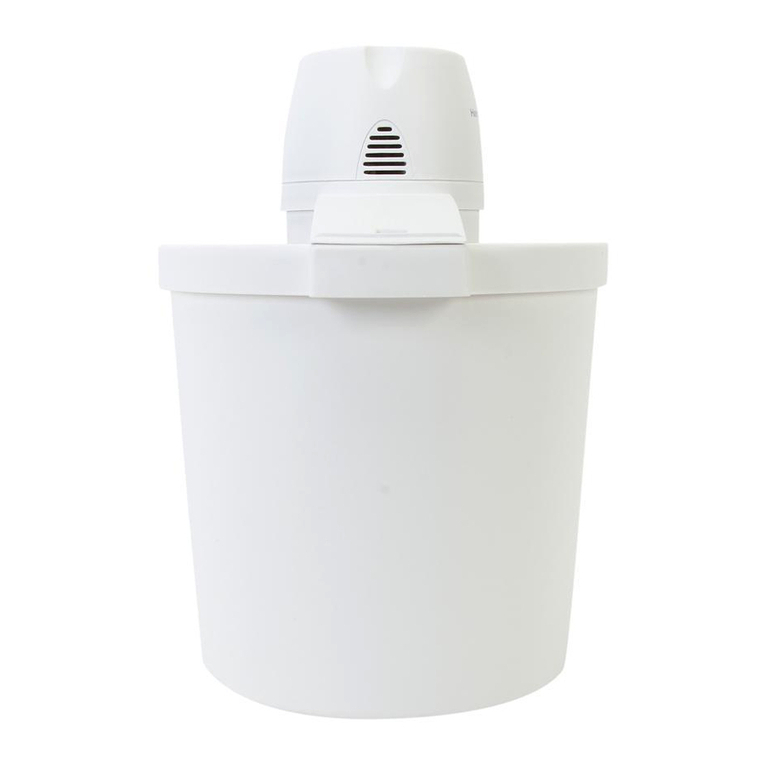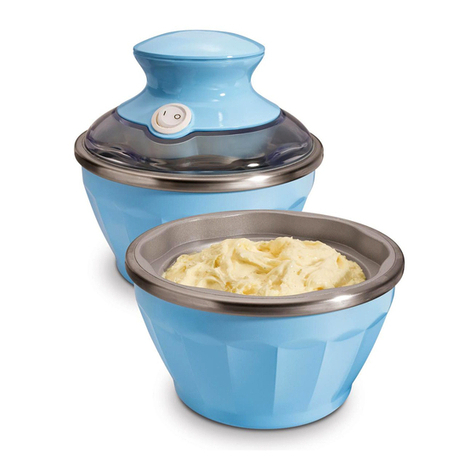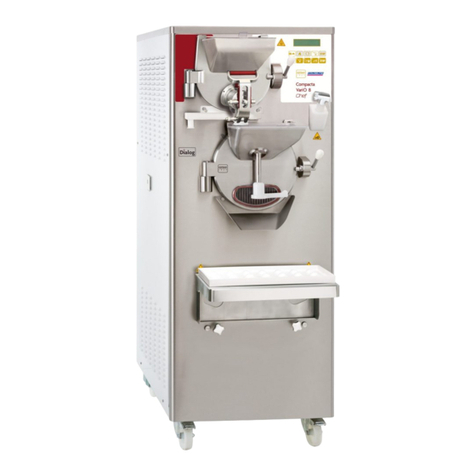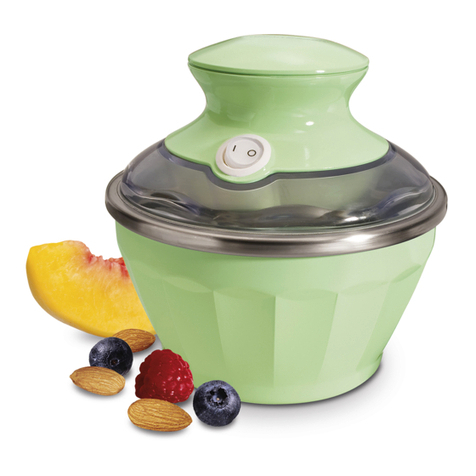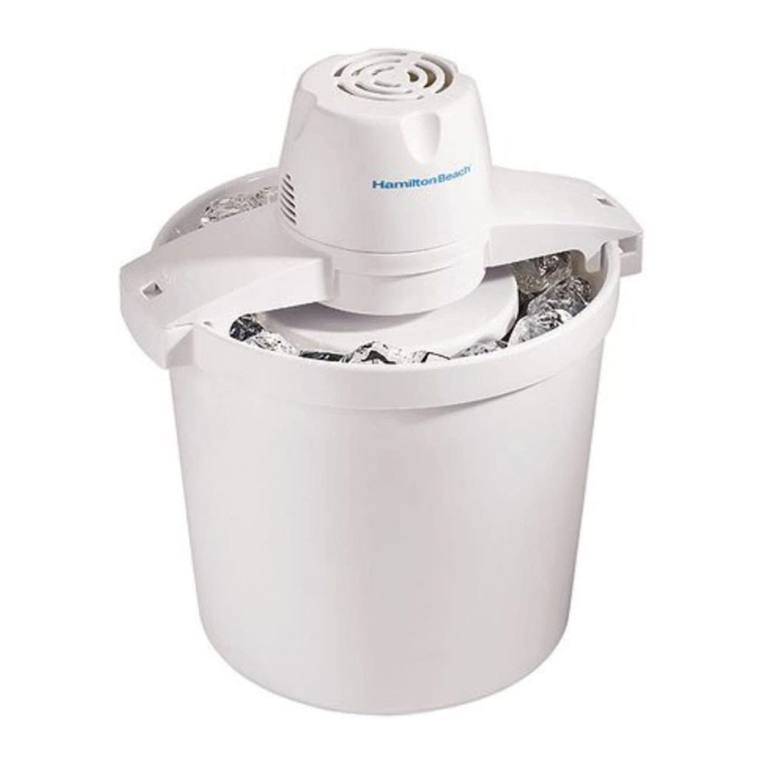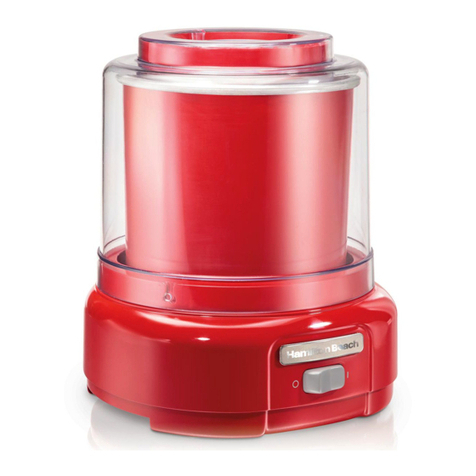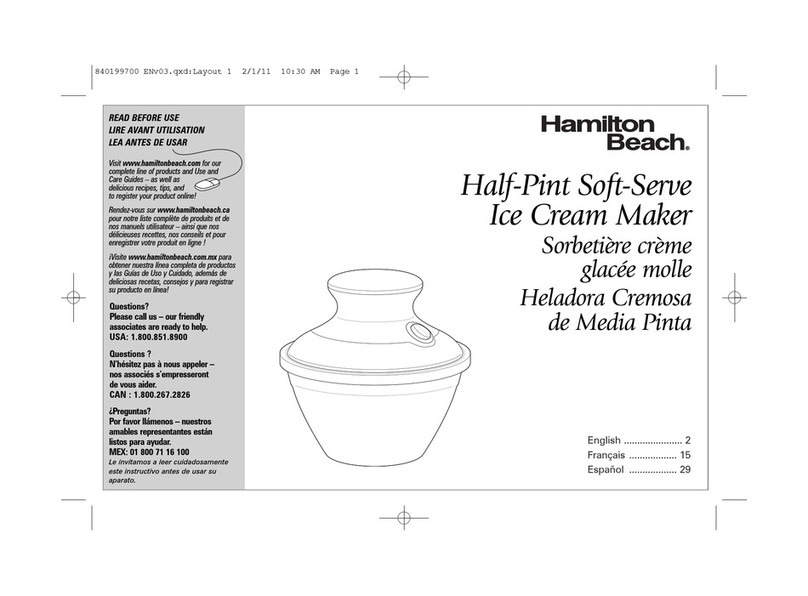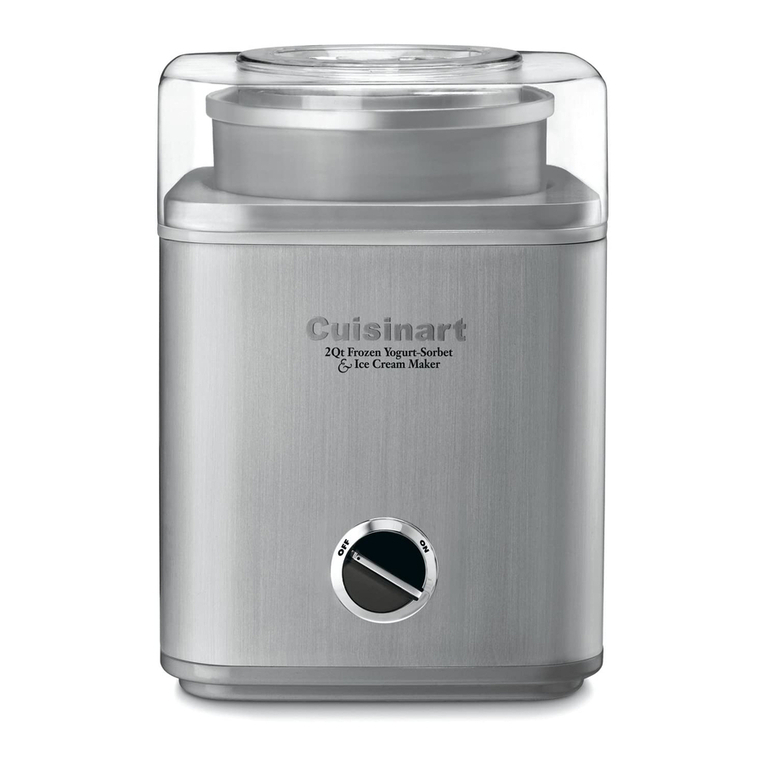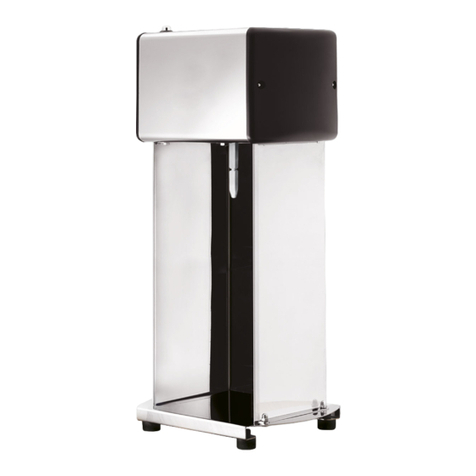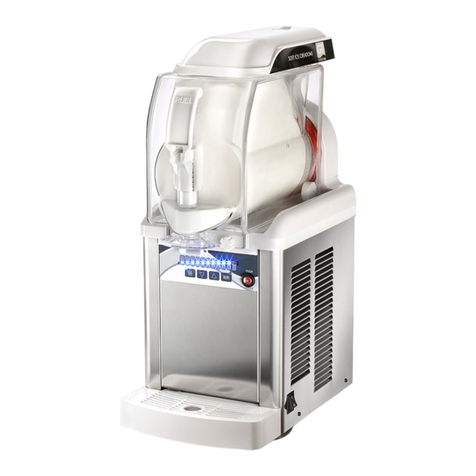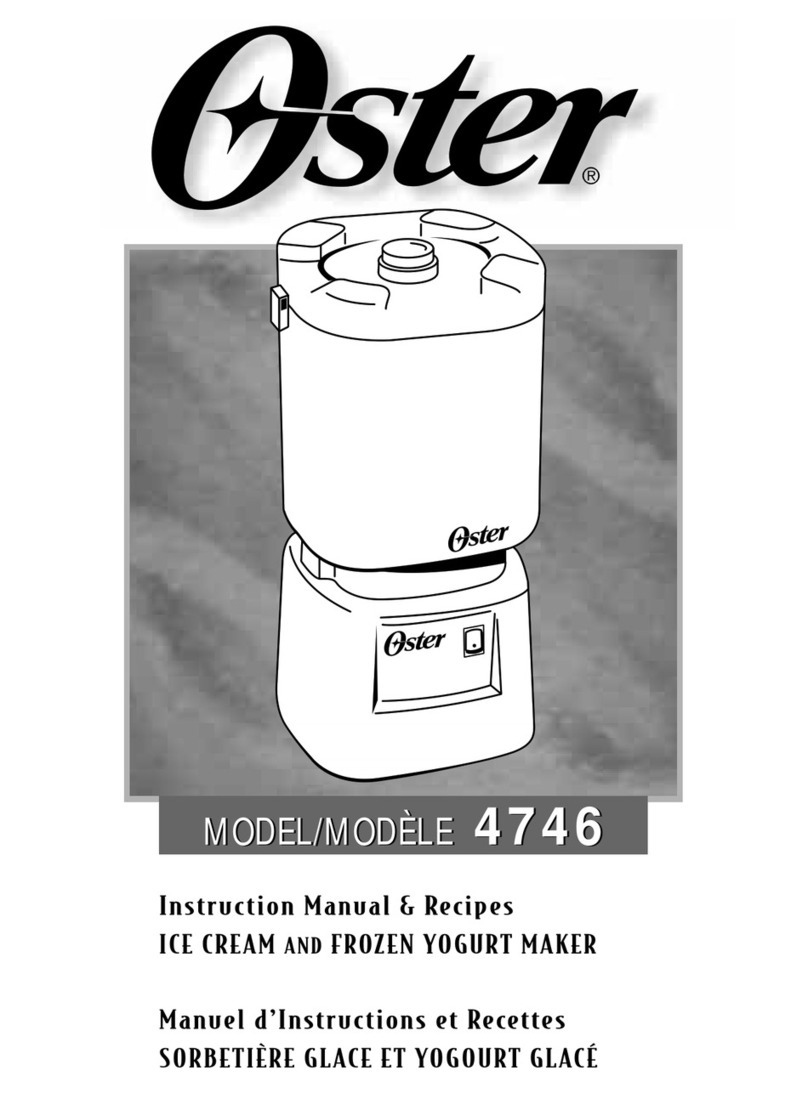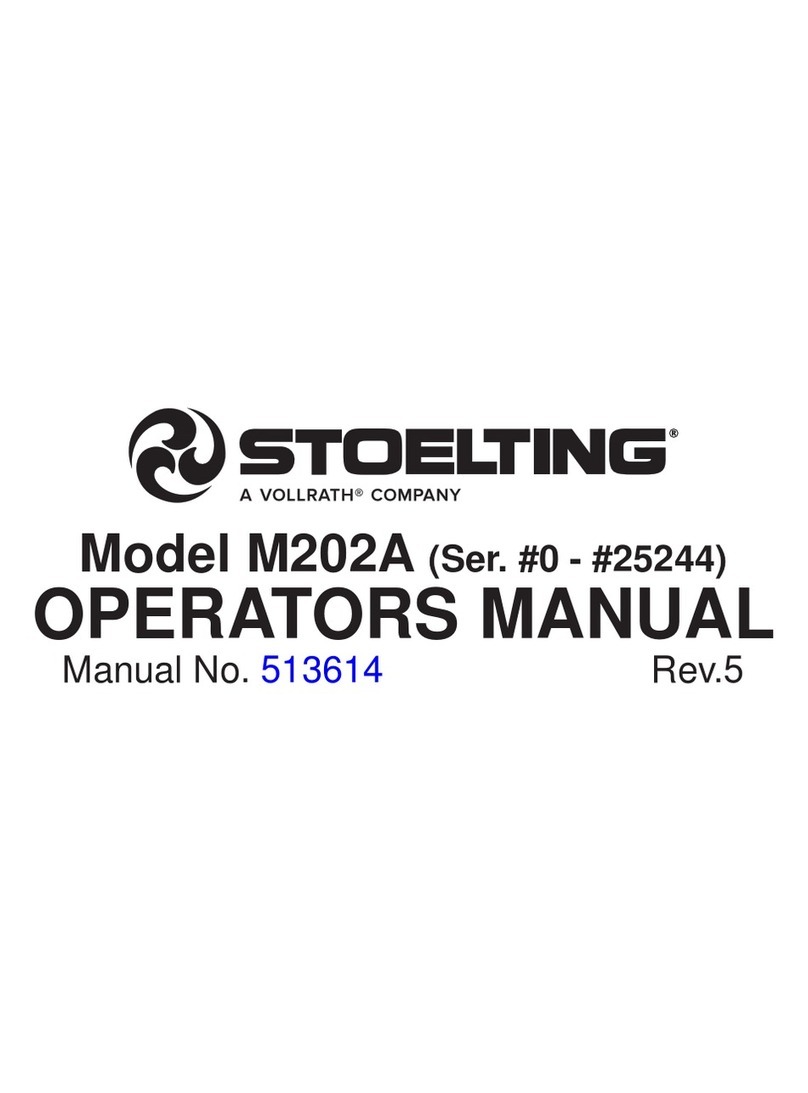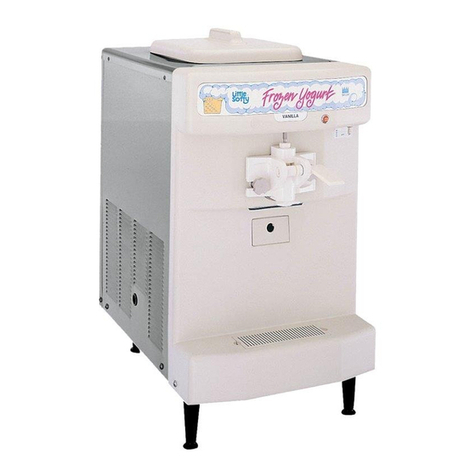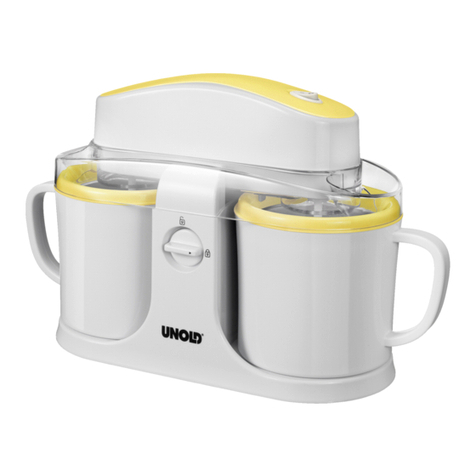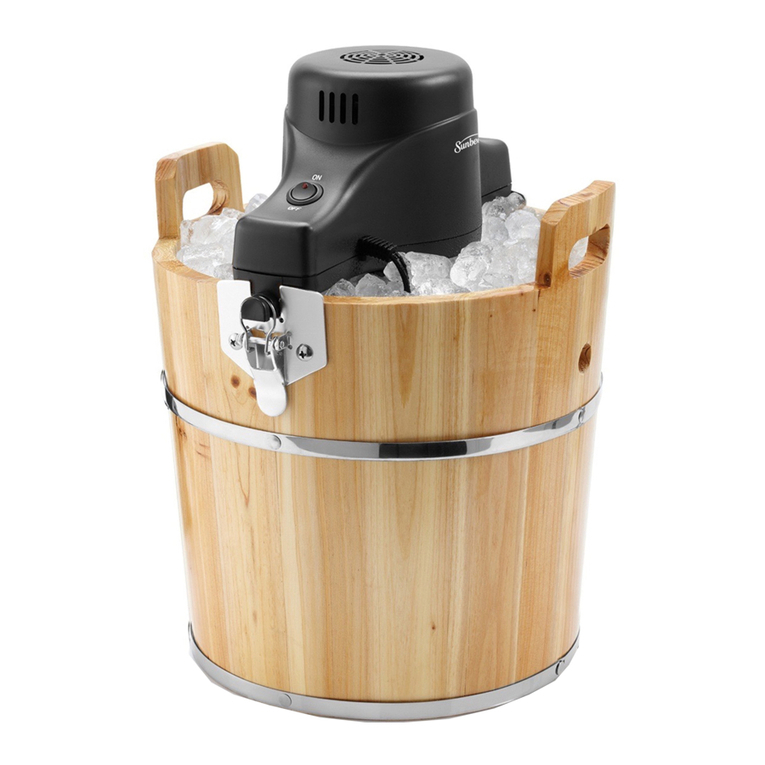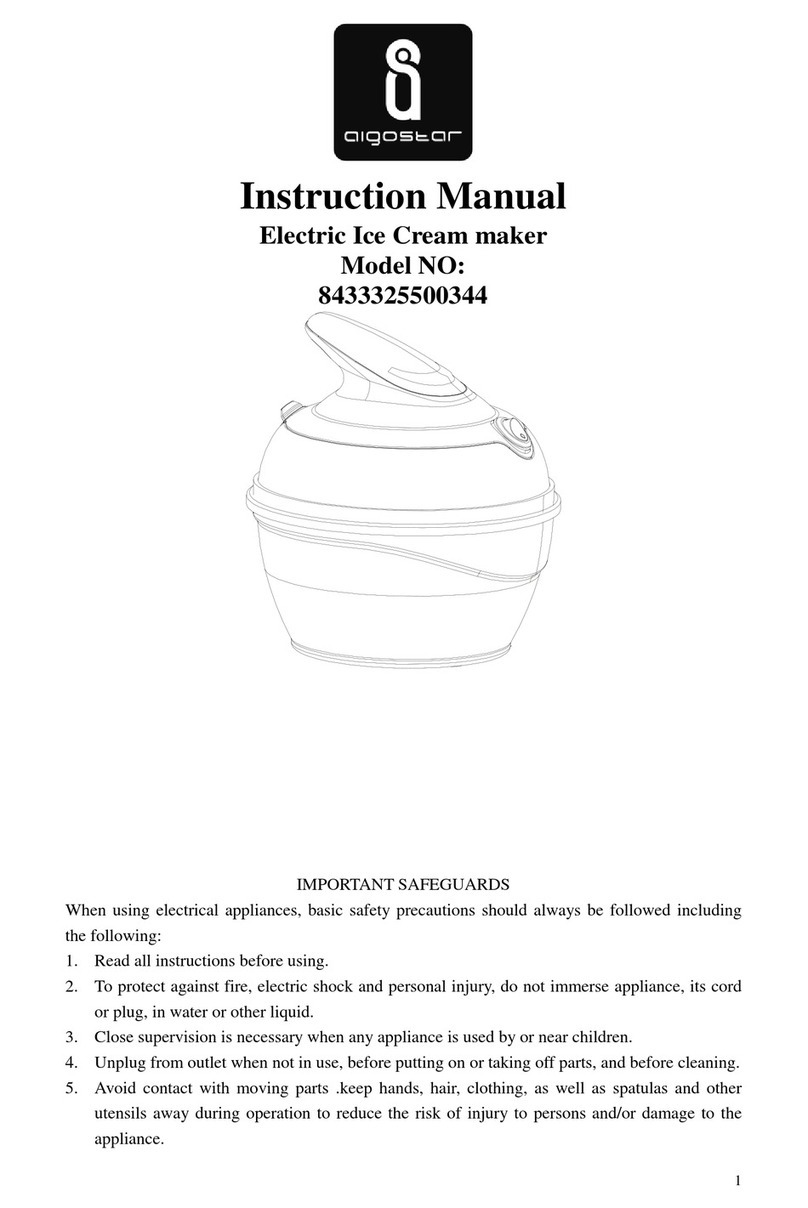2
IMPORTANT SAFEGUARDS
SAVE THESE INSTRUCTIONS!
1. Read all instructions.
2. To protect against risk of electrical
shock, do not put motor assembly of
appliance in water or other liquid.
3. Close supervision is necessary when any
appliance is used by or near children.
4. Unplug from outlet when not in use,
before putting on or taking off parts,
and before cleaning.
5. Avoid contacting moving parts.
6. Do not operate any appliance with a
damaged cord or plug or after the appli-
ance malfunctions, or is dropped or
damaged in any manner. Call our toll
free customer service number for infor-
mation on examination, repair or
electrical or mechanical adjustment.
7. The use of attachments not recom-
mended or sold by Hamilton
Beach/Proctor-Silex may cause fire,
electric shock or injury.
8. Do not use outdoors.
9. Do not let cord hand over edge of table
or counter or touch hot surfaces.
10. Do not let cord contact hot surfaces,
including the stove.
11. Keep hands and utensils out of cylinder
bowl while in use to reduce the risk of
unjury to persons or to the appliance
itself.
12. Do not place on or near a hot gas or
electric burner, or in a heated oven.
Do not use this unit near oven, heater
or fireplace.
13. To disconnect, turn any control to “OFF”
or “0” then remove plug from wall outlet.
14. Do not use appliance for other than
intended purpose.
This appliance intended for household
use only.
This appliance is equipped with a polarized
plug. This type of plug has one blade wider
than the other. The plug will fit into an elec-
trical outlet only one way. This is a safety
feature intended to help reduce the risk of
electrical shock. If you are unable to insert
the plug into the outlet, try reversing the
plug. If the plug should still fail to fit, con-
tact a qualified electrician to replace the
obsolete outlet. Do not attempt to defeat
the safety purpose of the polarized plug by
modifying the plug in any way.
CAUTION:
This appliance is for household use. An
authorized service representative should
perform any servicing other than cleaning
and user maintenance. Authorized service
personnel only should do repair.
• Check voltage to be sure that the voltage
indicated on the nameplate agrees with
your voltage.
• Keep your hands and the cord away from
hot parts of the appliance during operation.
• Never clean with scouring powders or
hard implements.
• Do not place or use the appliance on hot
surfaces, such as stoves, hotplates, or
near open gas flames.
• Do not expose the freezing cylinder to
temperatures above 105ºF/41ºC.
• Do not clean freezing cylinder in dishwasher.
• Do not unplug the unit by pulling on cord.
• Do not use if freezing cylinder is broken or
any liquid has leaked out.
BEFORE FIRST USE:
Remove all literature and packing material
from inside the ice cream maker. Separate
the lid from the motor by pulling apart.
Wash the freezing cylinder, lid, drive shaft
and churn blade in warm soapy water.
Thoroughly rinse and dry all parts. DO NOT
immerse electric motor assembly in water.
To clean, wipe with a moist cloth.
Consumer Safety Information
When using electric appliances, basic safety precautions should always be followed
including the following:
This is not a toy. Adult supervision is necessary when any appliance is used by
or near children.

